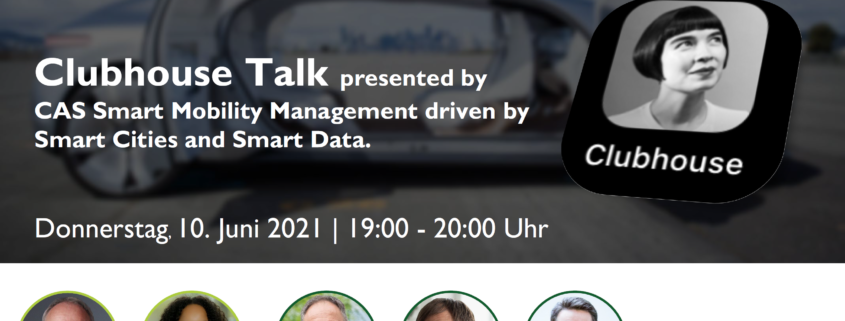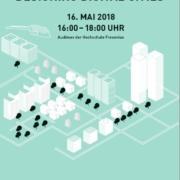Clubhouse Talk SMART Mobility #13: How London is shaping Future Mobility
The thirteenth talk in the clubhouse series “SmartMobility” took place on Thursday, June 10th, 2021, in which we (lecturers, participants, and partners from our CAS program “Smart Mobility Management driven by Smart Cities & Smart Data”) discussed current issues in the mobility industry and answer questions from our listeners.
The central question of this thirteenth talk was:
“How is London shaping future mobility?”
with …
➡️ Catrin Braun | SMART City Expert | Deutsche Telekom
➡️ Dr. Philipp Rode | London School of Economics/Executive Director LSE Cities | Lecturer at CAS «Smart Mobility Management«
➡️ Lukas Neckermann | COO Splyt | Lecturer at CAS «Smart Mobility Management«
BRAINFood:
▶️ How has your personal mobility behavior changed since you’ve been in London? In London, like in many cities, it is incredibly expensive to utilize an automobile as the main form of transportation. While there are still some times in which driving can be enjoyable, utilizing it as a main form of transportation while living in a city makes little financial sense when compared to the other options offered such as public transport and ride sharing.
▶️ What was the initial moment in which London started to think about shaping the future of mobility?
One of the most significant landmark events that started the discussion around the future of mobility in London was the release of the report “Traffic in Towns,” in which Sir Colin Buchanan outlined the potential damages caused by a reliance on the motor car by transportation, one of which being the disruption of the overall city structure of London. Another would be the discussion around clean air, a concern that continues to be one of the top priorities for people living in London and something that London has tried to alleviate through means such as congestion charge zones.
▶️ Which kinds of concepts for Start-ups work in London?
There is a large innovation culture in London that relies heavily on the freedom of data in terms of land transportation that is offered through organizations such as Transport for London. Apps such as Citymapper rely on this data to ensure that users can get from point A to point B as easily as possible.
▶️ Is there anything that doesn’t work in London that other cities can learn from?
One peculiarity about London that makes experimentation and implementation of different progressive mobility ideas is the lack of consistency and agreement between the different people and boroughs within London. For example, if one would like to drive a rentable electric scooter in one borough, they may not be able to drive it within another. This lack of agreement leads to many failed projects and experimentation such as spreading congestion charging, pop-up bike lanes, and low traffic neighborhoods.
▶️ If you were the mayor of London, what would you change and how? One aspect is London’s role as a leader for innovation for mega cities. London could fulfill this role by following through with more progressive initiatives such as low-traffic neighborhoods, low emission zones, and implementing more pedestrian zones such as superblocks. Another aspect would be focusing on the funding of the future of mobility, especially with respect to the effects of a change from gas-powered to electric-powered mobility.
“What will mobility in London look like in 2035?”
“Fewer lanes for automobiles, more electric buses, more autonomous mobility, and more integration of apps” (Lukas Neckermann)
“Calmer, slower and better flowing” (Dr. Philipp Rode)
“ …. and greener and more sustainable“ (Catrin Braun)
London provides an excellent example of not only what cities are currently doing to progress mobility, but also of what mobility in cities will look like in the future. Through the many methods of …
– reducing the reliance on automobiles,
– integrating accessible mobility, and
– implementing more sustainable means of transportation,
The areas that are currently taken up by automobile lanes can be turned into public spaces, allowing for a revitalization of many areas within the city. This idea of revitalization is one that we can expect from cities all around the world.









